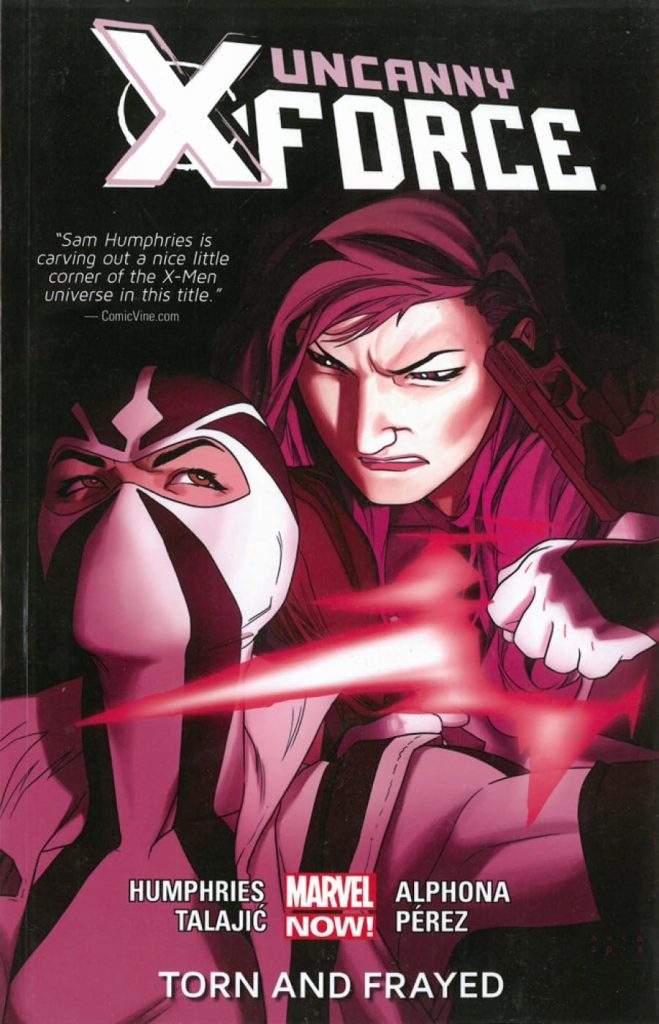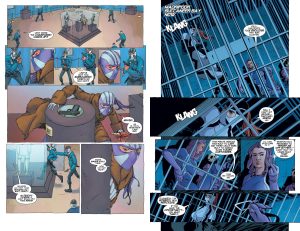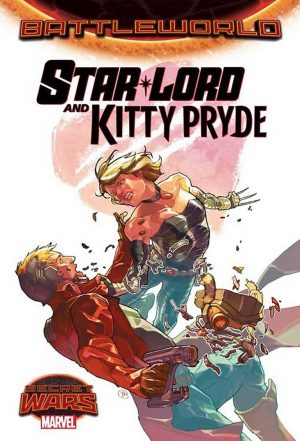Review by Frank Plowright
A feature of Rick Remender’s handling of the preceding version of Uncanny X-Force was the relationship between Psylocke and Fantomex, complicated by their assorted personalities. Fantomex having three brains eventually manifested in three separate people, and Weapon XIII has now become a threat.
Part of the mystery introduced in Let it Bleed was the six months Psylocke spent in Paris, which she doesn’t want to talk about. That’s now revealed over the opening half, with Adrian Alphona’s decorative styling illustrating what begins as an idyllic period, while Dalibor Talajić illustrates present day events in more traditional, although very polished superhero action style. In comparison with either Ramon Pérez is second best on the following sequence, dependent on little other than loose figures and faces.
Half the volume is occupied by the complex personal relationships between Psylocke and the three Fantomex personalities, but for all the decent art it’s never convincing or captivating. That three aspects of the same personality all love the same woman is reasonable, but Psylocke’s behaviour isn’t, especially when compared with her character being attracted to Fantomex in the previous run. If you’re not convinced by the foundations, then anything built on them is going to fall flat. The one redeemable aspect is how well Humphries fits events to the Rolling Stones lyrics to the song from which the title is taken.
What’s happening to the remainder of the cast from the first volume picks up in Torn and Frayed’s second half. It wraps up the problems Bishop brought with him from the future, but only becomes interesting when the surprise villain is revealed. However that’s just before the end and picks up in The Great Corruption, Humphries dropping the idea of Stones titles.
Big themes are introduced and the cast have unique sensibilities, but Humphries can’t pull out of second gear.





